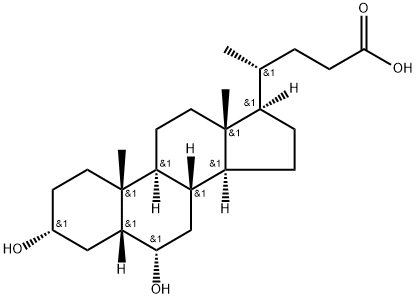Sineptina
- CAS NO.:1392-21-8
- Empirical Formula: C35H59NO13
- Molecular Weight: 701.84186
- MDL number: MFCD00210322
- EINECS: 232-429-6
- Update Date: 2025-12-16 16:15:04

What is Sineptina?
Description
Kitasamycin, formerly called leucomycin, was found in the culture broth of Streptoverticillium kitasatoensis by Hata et al. of the Kitasato Institute, Japan, in 1953. This was the first macrolide antibiotic with a 16-membered lactone constituent. Kitasamycin is a complex of eight leucomycin A components and is used in its base and ester forms to treat gram-positive bacterial and gram-negative coccal infections, as well as infections of Mycoplasma, Spirochaeta, and Treponema by injection or by oral topical administration.
The Uses of Sineptina
Sineptina is a family of closely related macrocyclic lactone antibiotics produced by Streptomyces kitasatoensis, discovered in 1953. The complex contained over 14 components with analogues A1, A4, A5, and A13 being the most abundant analogues.Sineptina is used as an animal health product for control of Gram positive bacteria, Gram negative cocci, leptospira and mycoplasma.
The Uses of Sineptina
Leucomycins (>85%) (cas# 1392-21-8) is a compound useful in organic synthesis.
Definition
ChEBI: Leucomycin V is a macrolide antibiotic produced by Streptomyces kitasatoensis, showing activity against a wide spectrum of pathogens. It has a role as a bacterial metabolite. It is a leucomycin and a macrolide antibiotic.
Pharmaceutical Applications
A naturally occurring product of Streptomyces kitasatoensis, available in Japan for parenteral and oral use, and as acetylkitasamycin for topical application. Elsewhere it is chiefly used in veterinary medicine.
Properties of Sineptina
| Melting point: | 128-145 °C |
| storage temp. | Sealed in dry,2-8°C |
| solubility | ethanol: 50 mg/mL, clear to slightly hazy, light-yellow |
| form | Solid |
| form | neat |
| color | White to Off-White |
| Merck | 14,5453 |
| CAS DataBase Reference | 1392-21-8 |
Safety information for Sineptina
| Signal word | Warning |
| Pictogram(s) |
 Exclamation Mark Irritant GHS07 |
| GHS Hazard Statements |
H302:Acute toxicity,oral |
| Precautionary Statement Codes |
P264:Wash hands thoroughly after handling. P264:Wash skin thouroughly after handling. P270:Do not eat, drink or smoke when using this product. P301+P312:IF SWALLOWED: call a POISON CENTER or doctor/physician IF you feel unwell. P501:Dispose of contents/container to..… |
Computed Descriptors for Sineptina
Sineptina manufacturer
New Products
Indole Methyl Resin tert-butyl 9-methoxy-3-azaspiro[5.5]undecane-3-carboxylate Boc-His(Boc)-OH 2-CTC Resin 4-Chloro-7-tosy1-7Hpyrrolo[2,3-d]pyrimidine 5,7-Dibromo-1H-indole 2,5-dichloro-N-hydroxy-4,6-dimethylpyridine-3-carboximidamide 2,2-Dimethoxy-7-azaspiro[3.5]nonane hydrochloride 4-chloromethyl-5-methyl-1,3-dioxol-2-one (DMDO-Cl) R-2-BENZYLOXY PROPIONIC ACID 1,1’-CARBONYLDIIMIDAZOLE 1,1’-CARBONYLDI (1,2-4 TRIAZOLE) N-METHYL INDAZOLE-3-CARBOXYLIC ACID 4-((2-hydroxyethyl)thio)benzoic acid 1-(TERT-BUTOXYCARBONYL)-2-PYRROLIDINONE Methyl 6-methylnicotinate 3-Pyridineacrylic acid tert-Butyl carbazate TETRAHYDRO-2H-PYRAN-3-OL 2-((4-morpholinophenylamino) (methylthio) methylene) malononitrile 3-(4-morpholinophenylamino)-5-amino-1H-pyrazole-4-carbonitrile 2,4-dihydroxybenzaldehyde 1,3-Diethyl-1,3-Diphenylurea Methyl 2-methylquinoline-6-carboxylateRelated products of tetrahydrofuran








You may like
-
 Leucomycin CAS 1392-21-8View Details
Leucomycin CAS 1392-21-8View Details
1392-21-8 -
 Leucomycin 98% (HPLC) CAS 1392-21-8View Details
Leucomycin 98% (HPLC) CAS 1392-21-8View Details
1392-21-8 -
 Pyridine 99.5% HPLC /UV SpectroscopyView Details
Pyridine 99.5% HPLC /UV SpectroscopyView Details
110-86-1 -
 Piperazine Spot supply, best priceView Details
Piperazine Spot supply, best priceView Details
110-85-0 -
 Dibutyl PhthalateView Details
Dibutyl PhthalateView Details
84-74-2 -
 Imidazole Spot supply, competitive priceView Details
Imidazole Spot supply, competitive priceView Details
288-32-4 -
 Octadecyl 3-(3,5-di-tert-butyl-4-hydroxyphenyl)propionate 98% (GC)View Details
Octadecyl 3-(3,5-di-tert-butyl-4-hydroxyphenyl)propionate 98% (GC)View Details
2082-79-3 -
 Thiourea 99% ARView Details
Thiourea 99% ARView Details
62-56-6
